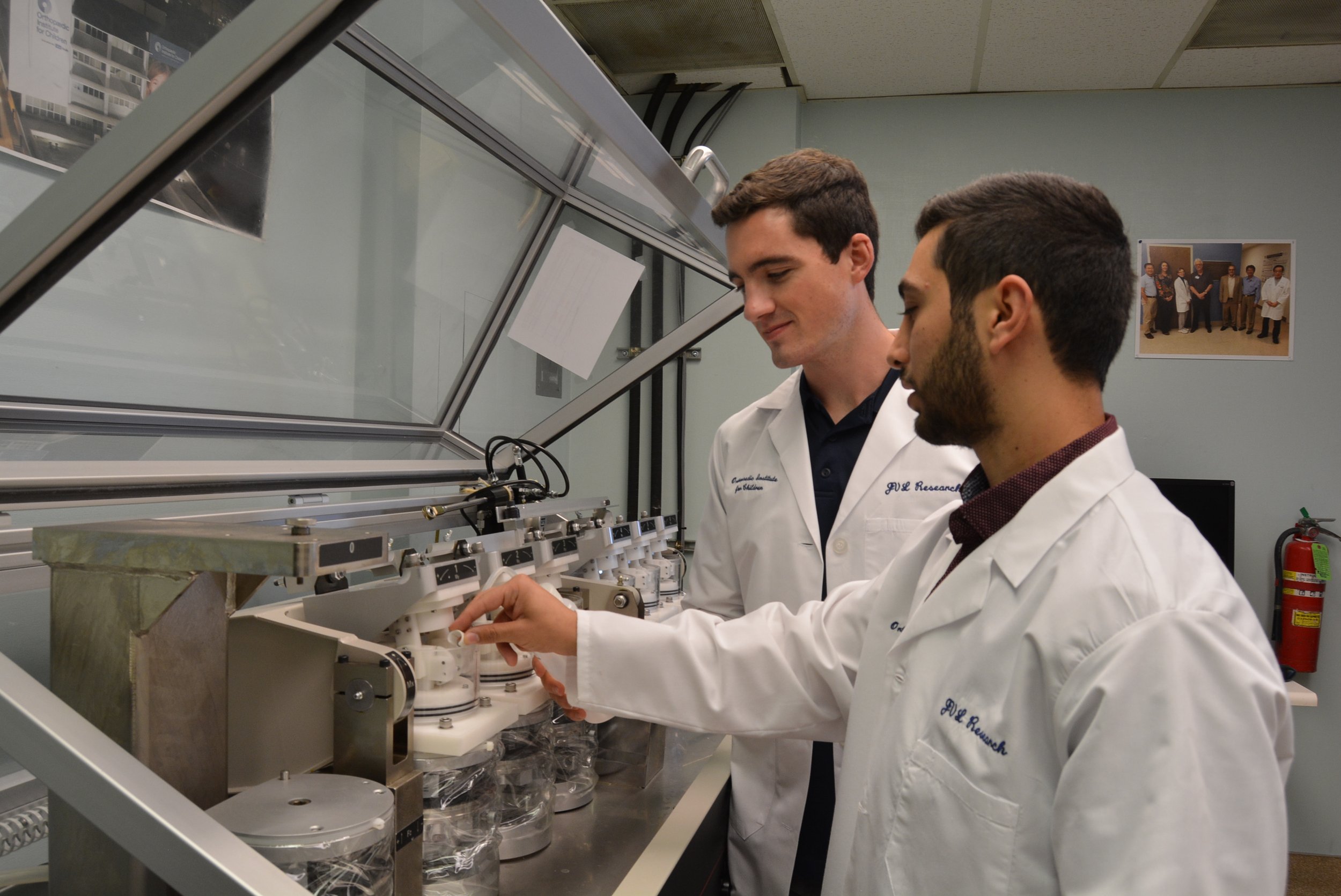
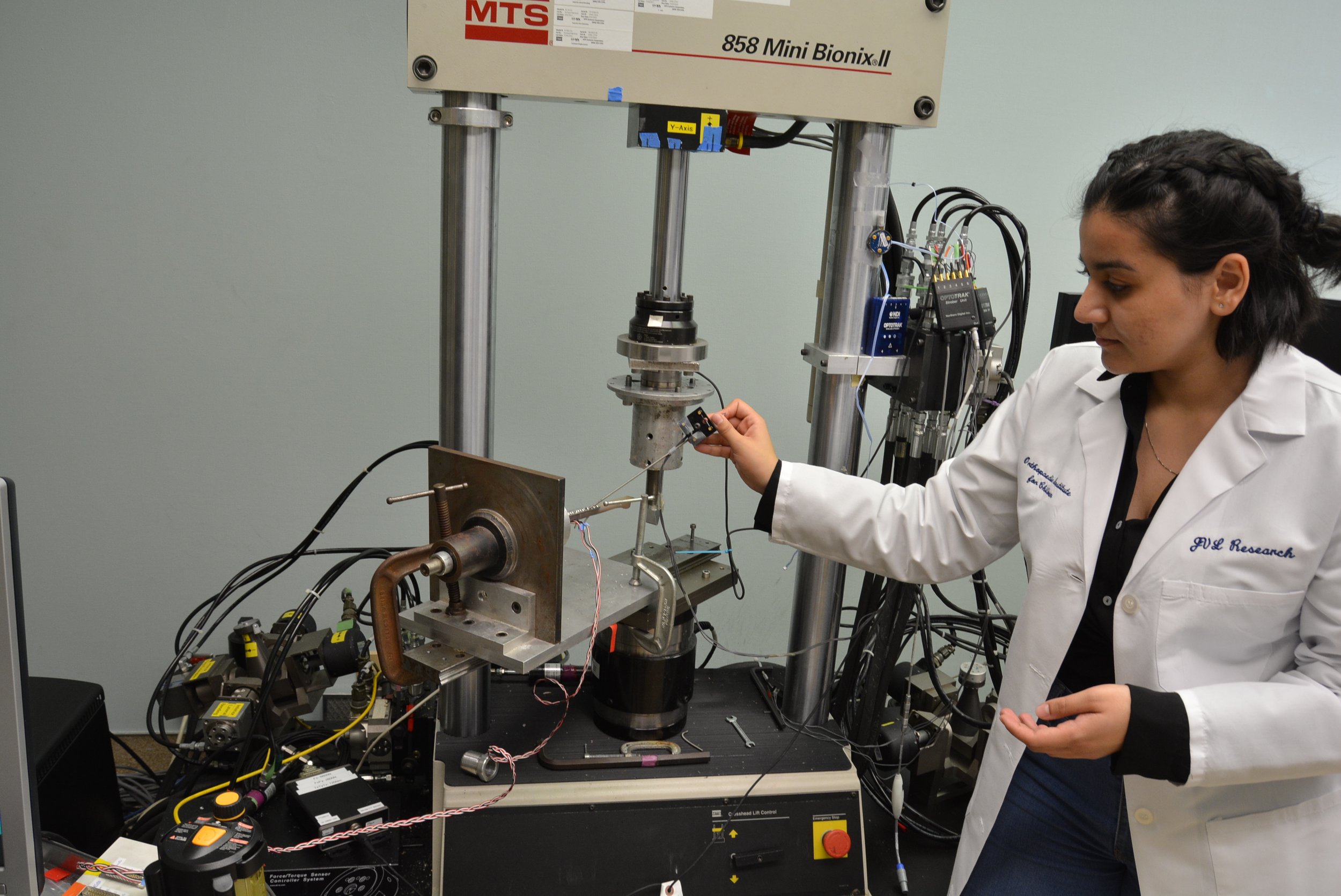


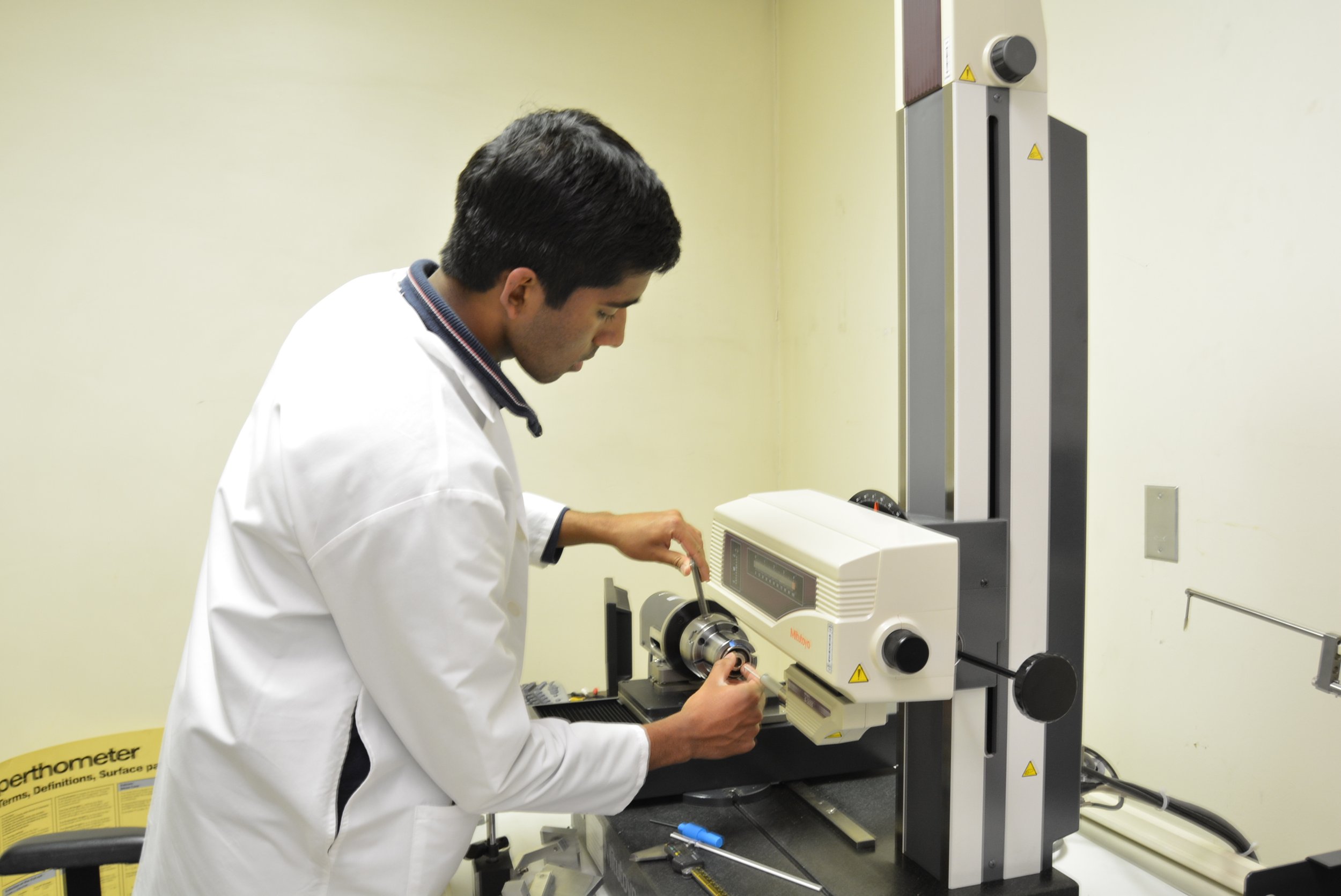

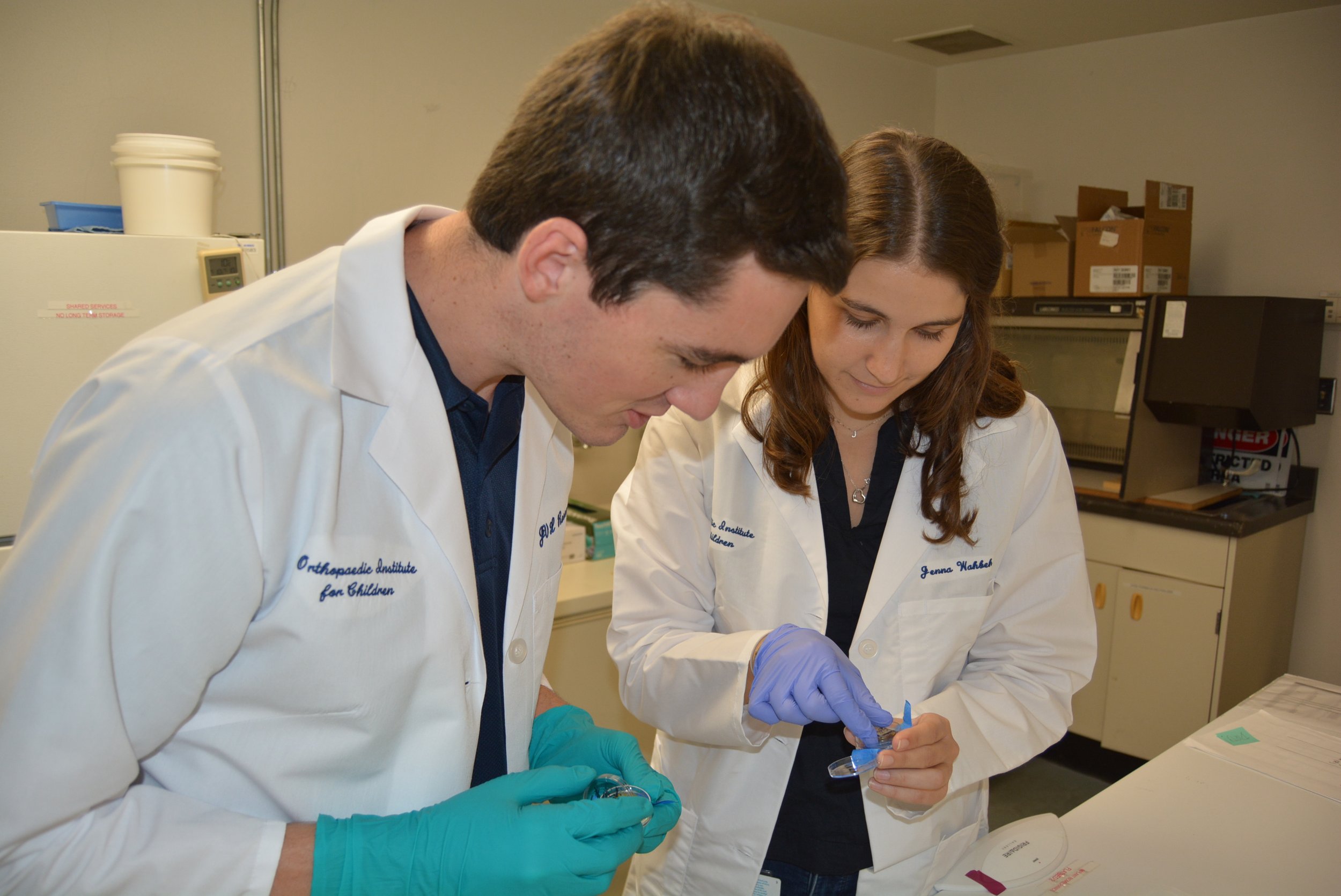
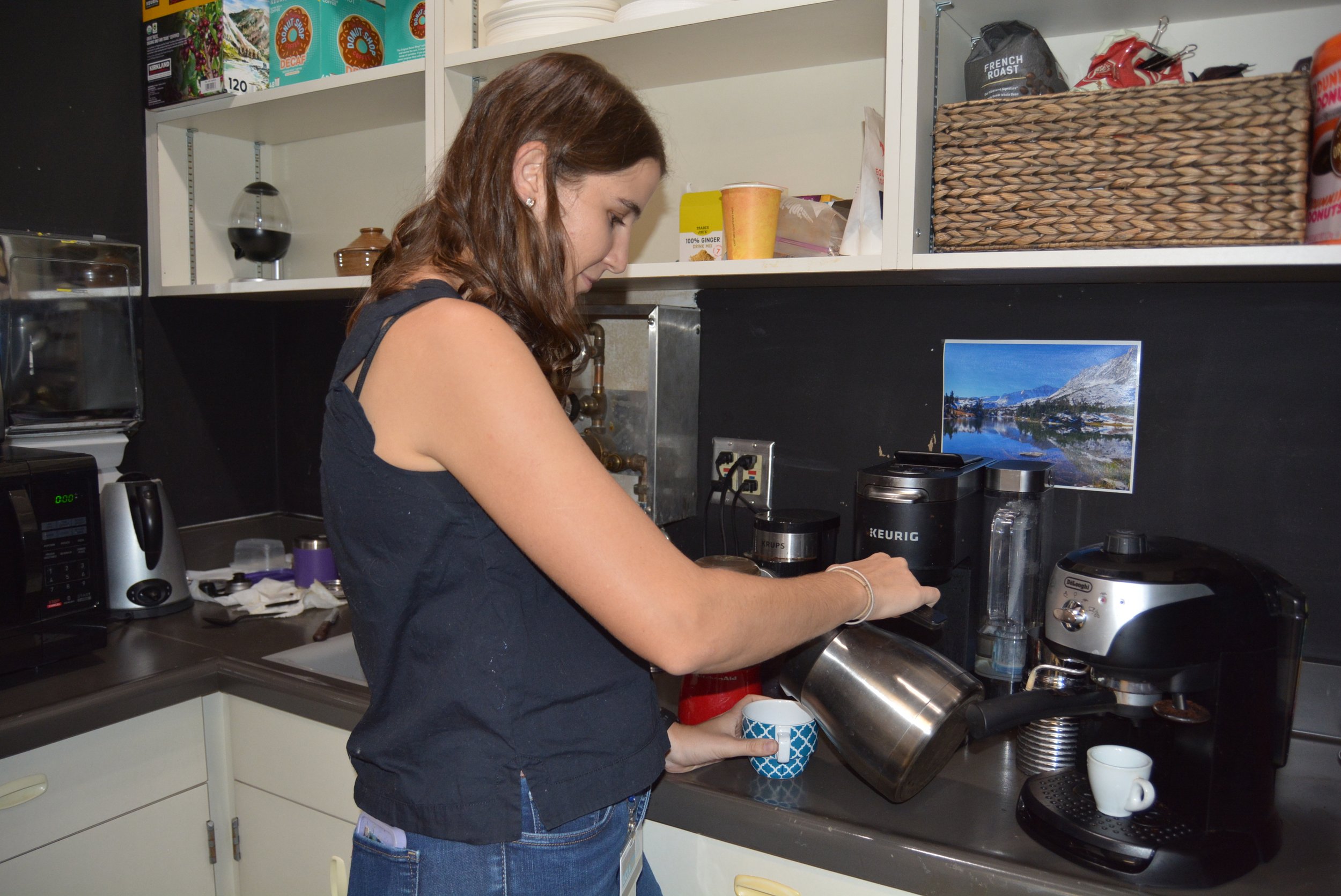
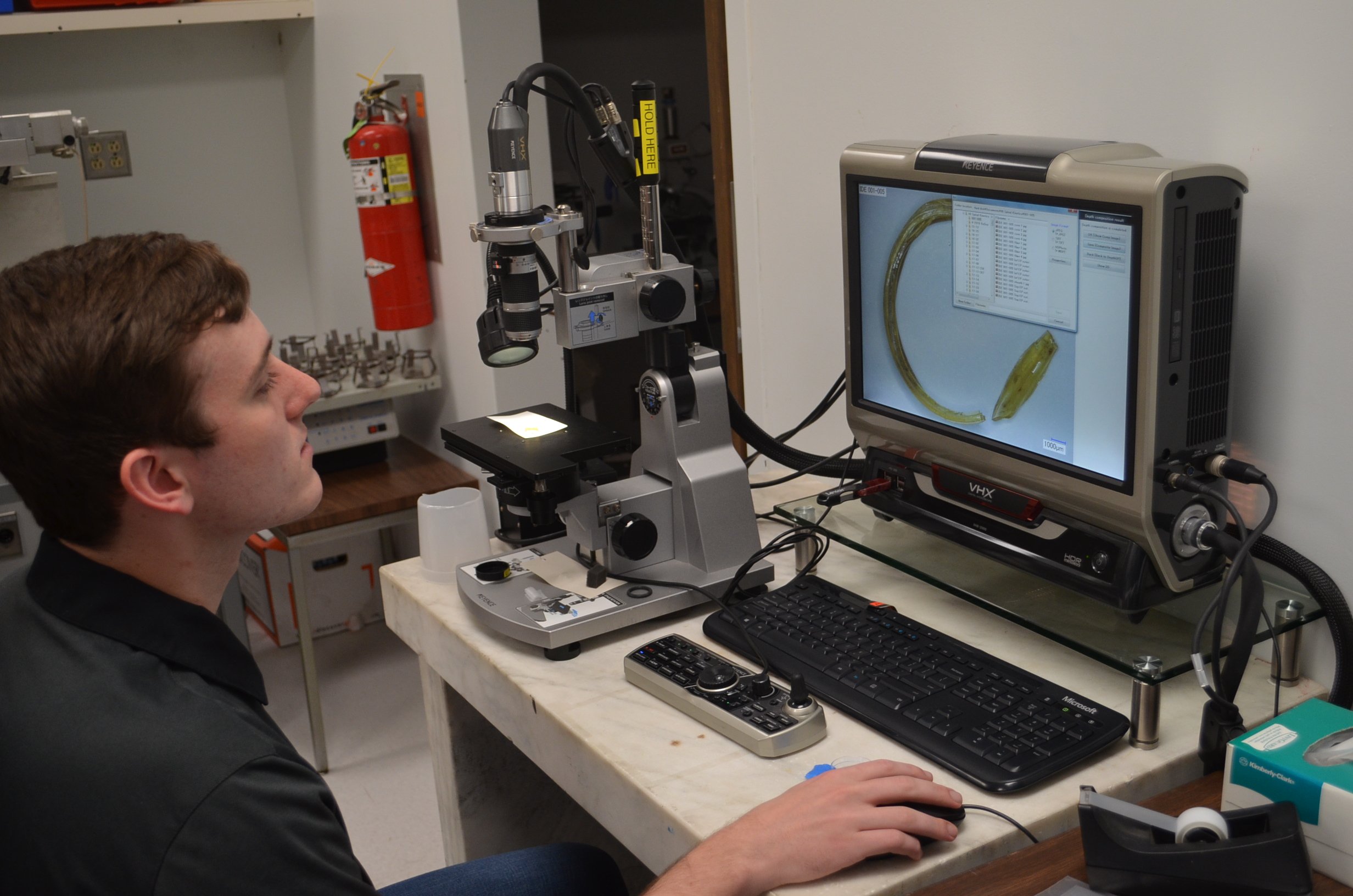
joint arthroplasty: Clinical & radiographic outcome
The JVL research center has a longstanding heritage of collaborating with orthopaedic surgeons in addressing questions related to implant design and biomechanics, using clinical and radiographic outcome studies to compliment or enhance biomechanical models.
spine biomechanics
The JVL researchers have collaborated with Sami Masri, PhD from the University of Southern California Engineering School to study the kinematics of spine. Specifically, mathematical models have been developed that describe motions and mechanical responses of the spine under load. These techniques have been used previously by Dr. Masri and his colleagues to characterize the mechanics of bridges and other engineering structures, and have been used to determine whether structures are damaged after accidents or natural disasters. Given a sufficiently large sample size, the technique will allow monitoring of spine health and recovery in patients.
implant retrieval & Wear analysis
The JVL Orthopaedic Research Center houses one of the largest collections of retrieved implants with nearly 4,000 components having been collected and analyzed. The retrieval laboratory continues to expand, and our research questions have expanded with it.
scoliosis biomechanics
Adolescent idiopathic scoliosis is both the predominant spine deformity and the predominant form of scoliosis, affecting approximately 80% to 85% of all scoliosis patients. The reported prevalence typically ranges from 1%-3%. In 2010 and 2011 alone, US hospitals discharged more than 12,000 adolescent patients with idiopathic scoliosis, costing the nation more than $1.8 billion. As scoliosis affects some of the youngest orthopaedic patients who require permanency in their treatments, the instrumented-fusion should provide stabilization for many decades of life.
Clubfoot outcome & Biomechanics
The JVL Researchers in close collaboration with orthopaedic surgeons, have conducted studies on the treatment and outcome of idiopathic clubfoot. An IRB approved database of more than 300 infants treated at OIC has been established, and used to study all aspects of clubfoot treatment.
joint arthroplasty: fixation
The JVL Research Center is recognized internationally for major contributions to the understanding of implant fixation. The researchers developed the first composite synthetic femur for biomechanical testing in the 1980’s, now widely available. Several custom load simulators have been designed and developed over the years.
Factors affecting fracture healing
The JVL researchers have investigated interfragmentary motion on fracture healing under carefully controlled laboratory conditions. Specifically, the difference between applying axial motion alone orshear motion on fracture healing has been studied. For this purpose, an in vivo model was designed and developed to simulate clinically relevant conditions specific to tissue healing of closed fractures.